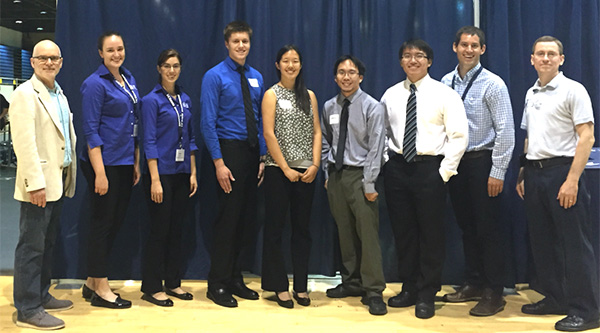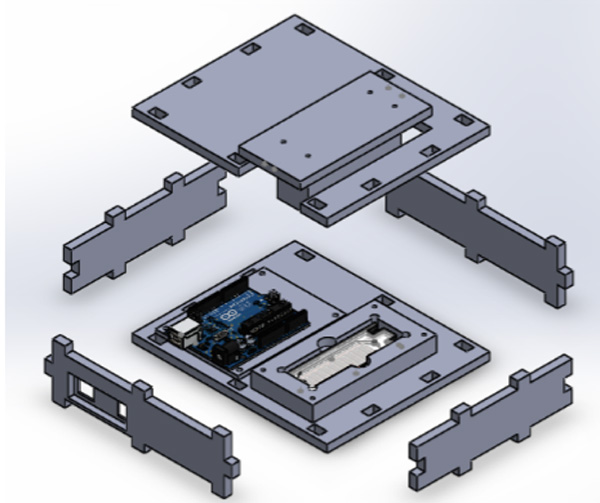Portable blood clotting monitor wins UC Davis/Sandia Engineering Design Award

At the University of California, Davis, Engineering Design Showcase, a team of biomedical engineering students debuted CoagVISTA, a portable, durable device for assessing blood clotting in trauma patients on the battlefield. The team won the Sandia Engineering Design Award for its innovative solution to a critical need among battlefield medics.
Risky gamble for military medics
When soldiers are injured on the battlefield, medics often do not have access to conventional blood monitoring devices seen in brick-and-mortar hospitals. Conventional devices are too sensitive to withstand the dust, heat, wind, vibration, and other environmental stressors found in combat environments, too complex to calibrate in the field, and too large to move with medics.
Without the ability to monitor a patient’s blood clotting after trauma, medics in already stressful environments are left with a dangerous gamble. If they administer pro-clotting treatment to a patient who doesn’t need it, the patient can develop a life-threatening blood clot. If a medic does not provide treatment to a patient who needs it, the patient could bleed to death.
Serving those who serve

Sandians with the winners of the Sandia Design Award at the Engineering Design Showcase at UC Davis. Left to right: Jim Schaaf (UC Davis), Jordan Thayer (8238), Helen Smith (8248), Brent Weyers (CoagVISTA), Victoria Chiu (CoagVISTA), Jeffrey-Annguye Le (CoagVISTA), Kevin Leung (CoagVISTA), Jacob Kilbane (8222), Anthony Passerini (UC Davis). (Photo provided by Chris Moen)
In the fall of 2015, the CoagVISTA team met with clinicians from the UC Davis Medical Center to investigate technology needs in the medical community. A vascular trauma surgeon who has worked with military units in Afghanistan recommended that they create a portable and durable device that would allow medics like him to accurately measure blood clotting in wounded patients.
Over the school year, the team went through the entire engineering design process from interviewing clients to demonstrating proof-of-concept to testing their prototypes. The device owes its durability and portability to a sensor that tests the electrical conductivity of a blood sample. As blood clots, the electrical conductivity of blood goes down.
Real world experience for new engineers
The projects at the UC Davis Engineering Design Showcase are the culmination of year-long senior capstone projects for undergraduate students across the College of Engineering. Students work in teams under the guidance of a faculty member to develop novel solutions to real-world problems using what they’ve learned throughout their undergraduate career.
“The Senior Design Experience is the pinnacle of their undergraduate studies,” says Tony Passerini, the faculty advisor for the CoagVISTA team. “They learn how to work together as a team, interact with industry professionals and subject matter experts, and go through the process of creating their prototypes. These experiences are very valuable when they apply for jobs.”
The Sandia Engineering Design Award, funded by Lockheed Martin Gifts and Grants, is awarded at the UC Davis Engineering Design Showcase held in June. Winners are honored with an inscription on an official plaque in Kemper Hall on the UC Davis campus. Judging is performed by a team of UC Davis College of Engineering faculty and Sandia technical staff.

An AutoCAD rendering of the CoagVista device.